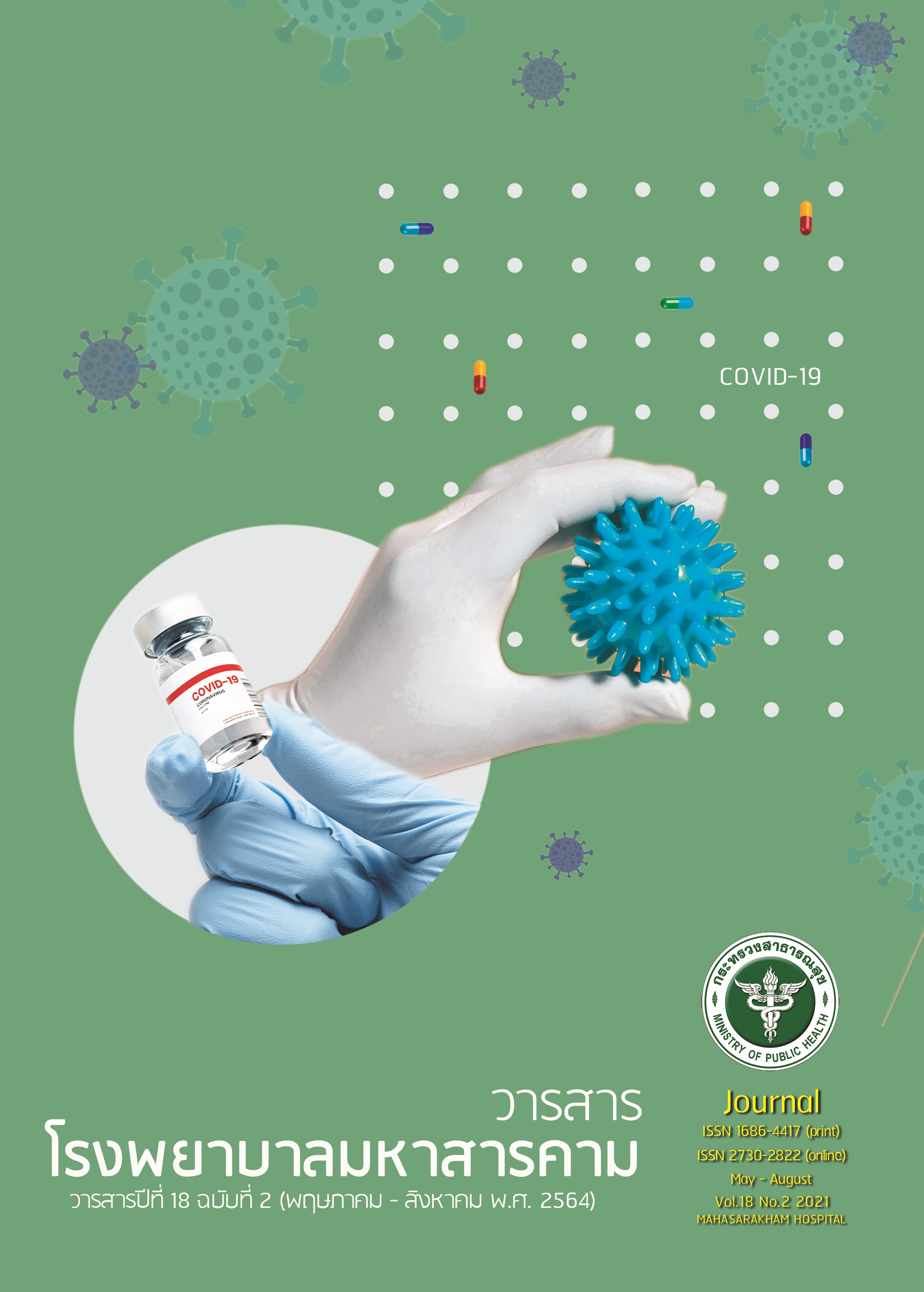Intra-operative Administration of intravenous TXA twice at a Dose of 1000 mg and Reduction of Perioperative Blood Loss in Posterior Lumbar Spine Decompression, Instrumentation, and Fusion Surgery in Degenerative Lumbar Stenosis and Spondylolisthesis
คำสำคัญ:
VAS = Visual analog pain scale, TXA = Tranexamic acidบทคัดย่อ
Introduction : Degenerative lumbar stenosis and spondylolisthesis are the most common disease in clinical practice. Many patients with these diseases are required to undergo posterior decompression and fusion surgery. The surgical procedure results in massive perioperative blood loss and significantly negative outcomes on patients. The purpose of this retrospective study was to investigate the efficacy of intravenous TXA administration. Specifically, intravenous TXA administration was compared to non TXA administration in order to confirm its efficacy in reducing perioperative blood loss and blood transfusion requirements in posterior lumbar spine decompression, instrumentation, and fusion surgery.
Material and Methods : This retrospective study in degenerative lumbar stenosis and spondylolisthesis patients undergoing posterior decompression lumbar spine, instrumentation, at the Orthopedic Clinic of Mahasarakham Hospital between January 2019 - December 2020. Participants were divided into two groups, the intra-operative intravenous TXA administration group (the Study Group) and the non TXA administration group (the Control Group). The Study Group and the Control Group were compared regarding perioperative blood loss.
Results : The mean of perioperative blood loss in the Study Group (1067.32ml±367.14) decreased significantly (t-test = -4.244, p-value = 0.003) compared to the Control Group (1609.30ml±748.18). The blood transfusion requirement in the Study Group decreased significantly compared to the Control Group in the intra-operative, postoperative and perioperative periods (p-value = 0.002, 0.009, and 0.002, respectively). By using the odds
ratio to analyze blood transfusion incidents, the Control Group showed five times of blood transfusion incidents higher than the Study Group in all of three periods(odds ratio = 0.197, 0.279, and0.232).
Conclusion : Intra-operative administration of intravenous TXA twice at a dose of 1000 mg is simple, safe, and efficacious in reducing the perioperative blood loss and blood transfusion requirements in patients undergoing posterior lumbar decompression, instrumentation, and fusion surgery.
เอกสารอ้างอิง
Liu X, Wang Y, Qiu G, et al. A systematic review with meta-analysis of posterior interbody fusion versus posterolateral fusion in lumbar spondylolisthesis. Eur Spine J 2014 ;23: 43–56.
Lee SY, Kim TH, Oh JK, et al. Lumbar stenosis: a recent update by review of literature. Asian Spine J 2015; 9: 818–28.
Neilipovitz DT. TA for major spinal surgery. Eur Spine J 2004;13(suppl 1):S62–5
McCormack PL. Tranexamic acid: a review of its use in the treatment of hyperfibrinolysis. Drugs 2012; 72: 585–617.
Ju JH, Ha HG, Jung CK, et al. Patterns of epidural venous varicosity in lumbar stenosis. Korean J Spine 2012; 9: 244–9.
Musluman AM, Yilmaz A, Cansever T, et al. Posterior lumbar interbody fusion versus posterolateral fusion with instrumentation in the treatment of low-grade isthmic spondylolisthesis: midterm clinical outcomes. J Neurosurg Spine 2011; 14: 488–96.
Tsutsumimoto T, Shimogata M, Ohta H, et al. Tranexamic acid reduces perioperative blood loss in cervical laminoplasty: a prospective randomized study. Spine (Phila, PA 1976) 2011; 36: 1913–8
Choksey MS. Perioperative lumbar epidural bleeding controlled by dural tube reflation. Brit J Neurosurg 2009; 23: 437–8.
McCormack PL. Tranexamic acid: a review of its use in the treatment of hyperfibrinolysis. Drugs 2012; 72: 585–617.
Taghaddomi RJ, Mashhadiezhad H, Attar ARS, et al. The effect of intravenous tranexamic acid on blood loss in lumbar hernial disc resection under inhalation and total intravenous anesthesia. Iranian Red Crescent Med J 2009; 11: 265–70.
Andersson L, Nilsoon IM, Colleen S, et al. Role of urokinase and tissue activator in sustaining bleeding and the management thereof with EACA and AMCA. Ann N Y Acad Sci 1968;146:642-58. 10.1111/j.1749-6632.1968.tb20322.x
Yang B, Li H, Wang D, et al. Systematic review and meta-analysis of perioperative intravenous tranexamic acid use in spinal surgery. PLoS One 2013;8:e55436. 10.1371/journal.pone.0055436
Raksakietisak M, Sathitkarnmanee B, Srisaen P, et al. Two Doses of Tranexamic Acid Reduce Blood Transfusion in Complex Spine Surgery: A Prospective Randomized Study. Spine (Phila Pa 1976) 2015;40:E1257-63. 10.1097/BRS.0000000000001063
Yagi M, Hasegawa J, Nagoshi N, et al. Does the Intraoperative Tranexamic Acid Decrease Operative Blood Loss During Posterior Spinal Fusion for Treatment of Adolescent Idiopathic Scoliosis? Spine (Phila Pa 1976) 2012;37:E1336-42.
Elwatidy S, Jamjoom Z, Elgamal E, et al. efficacy and safety of prophylactic large dose of tranexamic acid in spine surgery: a prospective, randomized, double-blind, placebo-controlled study. Spine (Phila Pa 1976) 2008;33:2577-80. 10.1097/BRS.0b013e318188b9c5
ดาวน์โหลด
เผยแพร่แล้ว
รูปแบบการอ้างอิง
ฉบับ
ประเภทบทความ
สัญญาอนุญาต
วารสารนี้เป็นลิขสิทธิ์ของโรงพยาบาลมหาสารคาม






